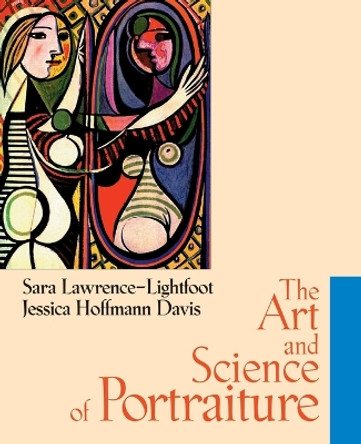Description
-American Journal of Education
A landmark contribution to the field of research methodology, this remarkable book illuminates the origins, purposes, and features of portraiture-placing it within the larger discourse on social science inquiry and mapping it onto the broader terrain of qualitative research.
About the Author
SARA LAWRENCE-LIGHTFOOT, a promminent sociologist and professor, of education at Harvard University, is the author of numerous books including The Good High School, Balm in Gilead, and I've Known Rivers. Winner of the prestigious MacArthur Prize, Lawrence-Lightfoot was recently awarded Harvard's George Ledlie Prize given for research that makes the "most valuable contribution to science" and that "benefits mankind." She has been a Fellow at the Bunting Institute at Radcliffe College and at the Center for Advanced Study in the Behavioral Sciences at Stanford University.
JESSICA HOFFMANN DAVIS is the Director of Arts in Education Concentration and a lecturer on education at the Harvard Graduate School of Education. She was the principal investigator of several arts projects at Harvard Project Zero. Her numerous publications include The MUSE (Museums Uniting with Schools in Education) Book and The Co-Arts Assessment Handbook.
Reviews
"The writing is beautiful, the ideas persuasive, and the picture it paints of the process of careful observation is one that every writer should read. . . . Clearly a statement about the seriousness, the difficulty, the judgmental standards, and ultimately, the reliability of this form of qualitative research. . . . A rich and wonderful book." --American Journal of Education
"Rich in insight and gracefully written. . . . The authors do a masterful job here of clarifying the dimensions of this dynamic layered research process. They make a convincing case for portraiture as a useful tool for exploring the complexity and aesthetic of experience, particulary educational experience. Most important, this volume advances portraiture as a generative research process that produces documents of both 'inquiry AND intervention.'" --Journal of Critical Inquiry Into Curriculum and Instruction
"This bold fascinating book attempts the impossible: to describe, even to start explaining a little what makes a good portrait?tackling brilliantly the ages old issue of how the vivid particular and the abstract universal can live in the same portrait. The lay reader will be delighted by this graceful book, but so will the human scientist looking for guidance in carrying out qualitative research. Traditional social scientists should read it, too, for when they have finished making up their number tables, they must translate them into narrative portraiture if they want their findings to matter." --Jerome Bruner, research professor of psychology, senior research fellow in law, New York University
"In this daring study, the authors show us that the representation of a community or an institution is an art as well as a science. They acknowledge the imaginative, the idiosyncratic, the sympathetic aspects inherent in the undertaking, revealing how attempting to suppress them risks distortion and desiccation." --James Ackerman, Arthur Kingsley, Professor Emeritus of Fine Arts, Harvard University
"Unique in this text is the serious and informed concern for aesthetic qualities of each presentation, a concern that allows for exploration of contexts and a crossing of the gulfs between art and empiricism. Breaking through old either/ors, the authors invite us to see differently, to hear differently, and?in some fascinating manner?to understand." --Maxine Greene, William F. Russell, Professor Emerita in the Foundations of Education, Teachers College, Columbia University
Book Information
ISBN 9780787910648
Author Sara Lawrence-Lightfoot
Format Hardback
Page Count 316
Imprint Jossey-Bass Inc.,U.S.
Publisher John Wiley & Sons Inc
Weight(grams) 733g
Dimensions(mm) 245mm * 183mm * 32mm






